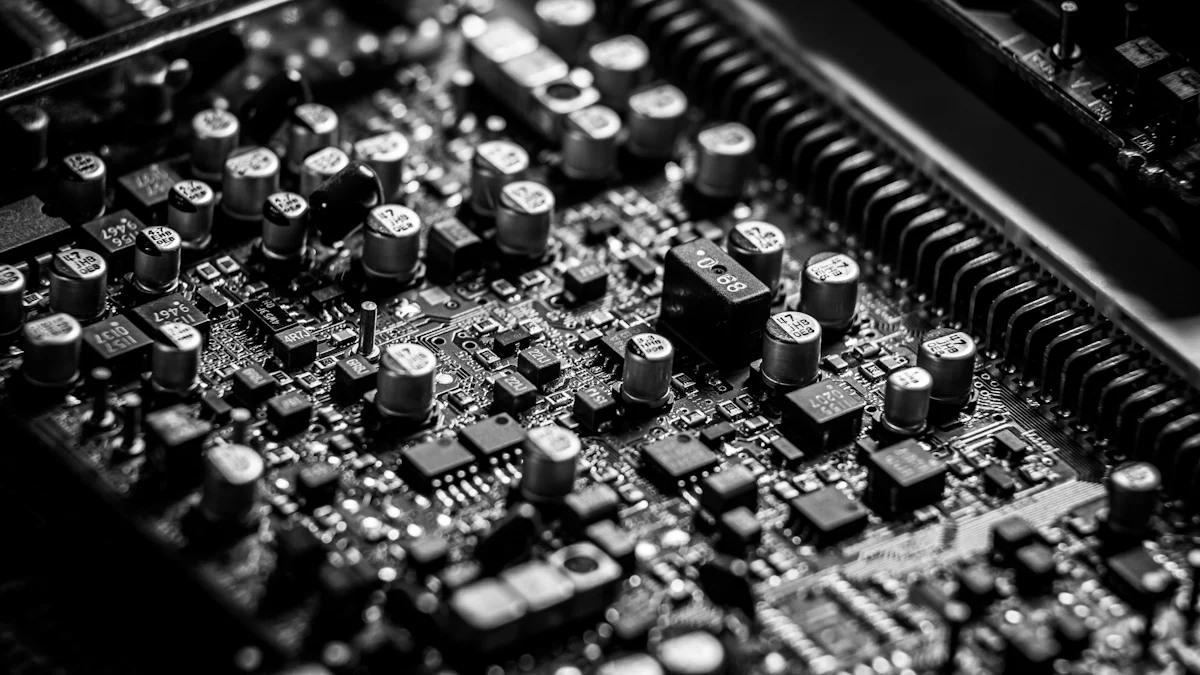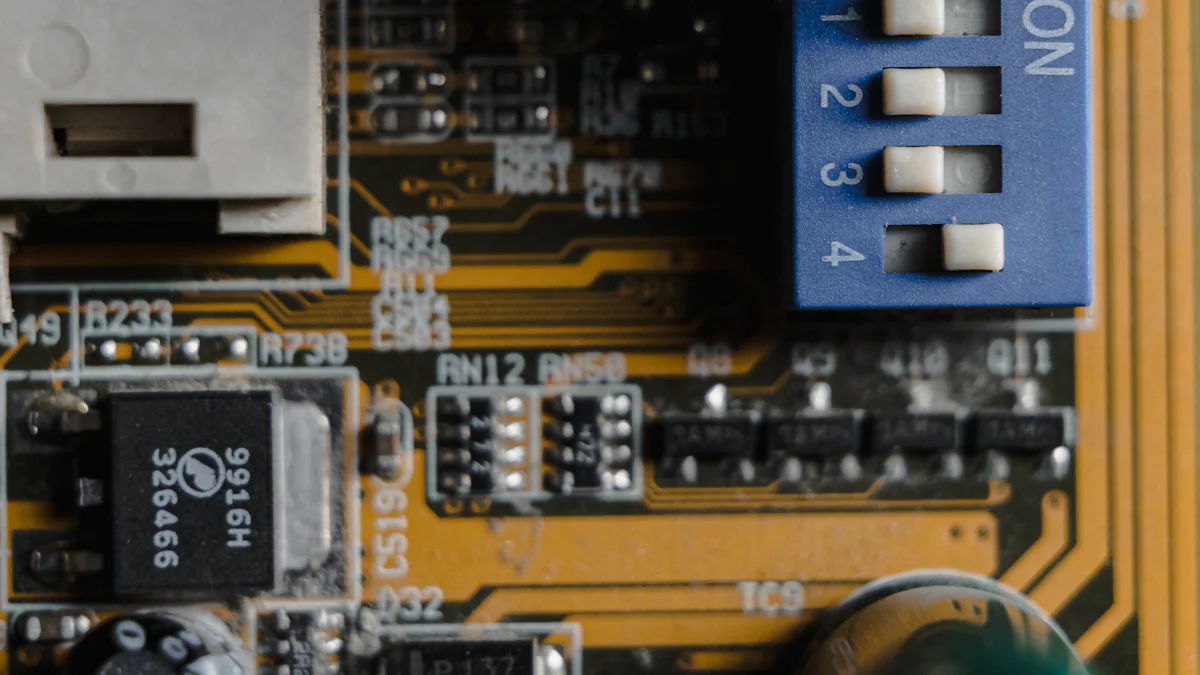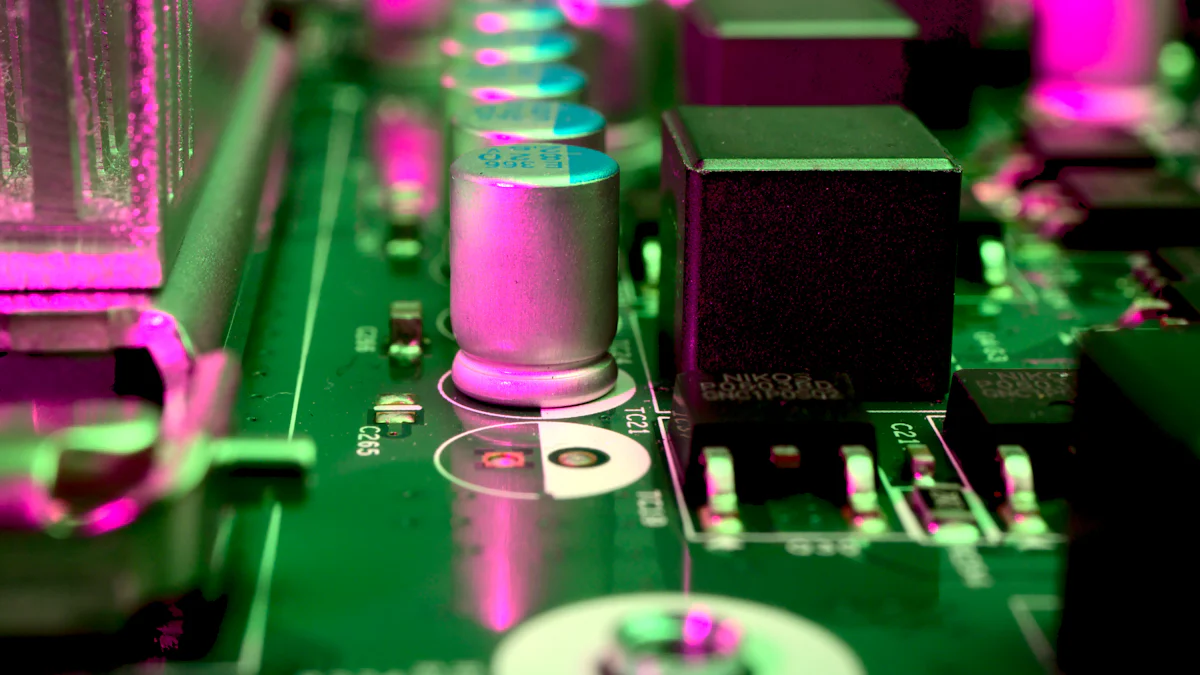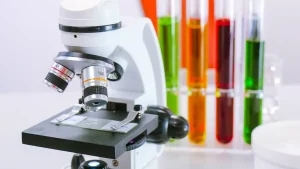
エピタキシャルバレルスセプターは、エピタキシャル成長のための安定した効率的なプラットフォームを提供することで、半導体製造における重要な役割を果たしています。 これらのコンポーネントは、高品質の半導体ウェーハを作成するために不可欠である材料の正確な堆積を保証します。 この技術の進歩は、性能と信頼性を高める革新的な材料とデザインを導入しました。 これらの改善は、高度な電子機器やコンピューティングアプリケーションの急速な成長によって駆動される高性能半導体の需要の増加に対応します。 ウェーハの品質と生産効率を最適化することにより、半導体製造の未来を形作り続けます.
要点
- エピタキシャルバレルの感受性は精密な材料の沈殿物を通して良質の半導体のウエファーを達成するために重要です.
- SiCコーティンググラファイトなどの材料の最近の革新、耐久性と熱安定性を高め、ウェーハの品質を向上させます.
- 縦型バレルの原子炉を含む設計進歩は、熱配分およびガスの流れを最大限に活用し、ウエファーを渡る均一沈殿物を保障します.
- 次世代リアクターシステムとの統合により、生産効率が向上し、より大きなウエハサイズ、会議業界のニーズに対応しています.
- ローディングおよび荷を下すプロセスのオートメーションは人間の間違いを減らし、生産を合理化し、全体的な効率を高めます.
- 物質科学と原子炉の設計に関する研究は、現在の限界を克服し、半導体製造における将来の進歩を促すために不可欠です.
- アカデミアと業界とのコラボレーションにより、エピタキシャルバレルスセプター技術の継続的な進化を加速します.
エピタキシャルバレルスセプター技術の概要
エピタキシャル成長の基礎
エピタキシャル成長は半導体製造の礎石として機能します。 このプロセスは基質で結晶層を堆積させ、基質の原子構造と新しい層を合わせることを保障します。 メーカーは、精密な電気特性で高品質のウェーハを生成するために、エピタキシャル成長に依存しています。 これらのウエハは、マイクロプロセッサやメモリチップなど、高度な電子機器の基礎を形成します.
プロセスは通常、エピタキシャル原子炉内の制御環境で発生します。 これらの原子炉は均一沈着を達成するために特定の温度およびガスの構成を維持します。 これらの条件を慎重に管理することにより、エンジニアは例外的な純度と構造的完全性でレイヤーを作成することができます。 現代の半導体アプリケーションの厳しい要件を満たすには、この精度が不可欠です.
エピタキシャルリアクターにおけるバレルスセプターの役割との重要性
バレルの感受性器はエピタキシャル原子炉のピボタル ロールを担います。 これらのコンポーネントは、蒸着プロセス中にウェーハを保持し、安定性と均一性を保証します。 ヒートディストリビューションをすることで、あらゆるウェーハ間で一貫したエピタキシャル成長を実現することが重要となります。 この均一性がなければ、結果の半導体デバイスは性能の矛盾に苦しむかもしれません.
現代バレルの感受性は頻繁にSiC上塗を施してあるグラファイトのような高度材料を特色にします。 これらの材料は高温に耐え、化学劣化に抵抗し、要求する製造環境に理想的です。 また、バレルスセプターはウエハスループットの最適化に貢献します。 複数のウェーハを同時に交換することにより、品質基準を維持しながら生産効率を高めます.
最近の革新はバレルの感受性の機能性を更に改善しました。 たとえば、垂直バレル原子炉は、ウェーハの厚さと表面品質に関する課題に取り組む、より良い蒸着均一性を提供します。 これらの進歩は、半導体技術の境界をプッシュするバレルの感受性の重要性を強調しています.
エピタキシャル・バレルのスセプターの技術の最近の進歩

バレルのスセプターの物質的な革新
素材の最近の進歩は、エピタキシャルバレルスセプターの性能を大幅に高めました。 メーカーは、極端な温度に耐える能力と耐薬品性耐摩耗性のために、SiCコートグラファイトを標準材料として使用しています。 半導体製造に欠かせない高温プロセスの耐久性を確保します。 SiCコートグラファイトの熱安定性向上により、一貫したウェーハ品質に貢献します.
SiCコーティングに加えて、研究者は、パフォーマンスをさらに最適化するために代替材料を探求してきました。 例えば、高熱伝導率の高度な複合体を導入しました。 これらの材料は、受容体全体での熱分布を改善し、エピタキシャル成長中に均一な堆積を保証します。 このようなイノベーションは、ウェーハの厚さの変動と表面不規則性に関する課題に対処します.
物質の革新はまた汚染の危険を減らすことに焦点を合わせます。 半導体デバイスにおける欠陥につながる、ウェーハの品質を損なうことができます。 脱気特性を下げる材料を使用することで、メーカーは汚染を最小限に抑え、より高い収量とより良いデバイス信頼性をもたらします。 これらの進歩は、材料科学がエピタキシャルバレルスセプター技術の改善を推進し続ける方法を示しています.
高められた性能のための設計改善
エピタキシャルバレルスセプターの設計は、現代の半導体製造の要求を満たすために重要な精製を受けています。 エンジニアは、熱分布を高め、ウェーハのアライメントを改善するために、スセプターの幾何学を最適化しました。 これらの変化は、各ウェーハが均一な熱曝露を受け、一貫したエピタキシャル成長を達成することが重要であることを確認します.
立形バレル原子炉の設計はこの区域の主要な進歩を表します。 これらの原子炉は、より優れたガスの流れと堆積の均一性を可能にする、垂直構成を改善した感受性器を組み込んでいます。 このイノベーションは、不均一なガス分布がしばしば矛盾する結果につながる水平設計の以前の制限に対処します.
もう一つの注目すべき改善は、高度な冷却メカニズムの統合を含みます。 高められた冷却装置は過熱を防ぎます、それは感受性材料を劣化させ、ウエファーの質に影響を与えることができます。 最適な動作温度を維持することで、サスペンサーの寿命を延ばし、メンテナンスコストを削減します.
オートメーションは設計の進歩で役割を担っています。 現代のスセプターは、自動化されたローディングとアンロードシステムを備えています。これにより、効率性を高め、ヒューマンエラーのリスクを低減します。 これらのシステムは、製造プロセスを合理化し、メーカーが高性能半導体の需要拡大に対応できるようにします.
次世代リアクターシステムとの統合
エピタキシャルバレルスセプターは、効率とスケーラビリティを優先する次世代原子炉システムと整列するために進化しました。 二重バレルの原子炉は、例えば、妥協する質なしでスループットを高めるために2つの平行システムを利用します。 この設計革新は製造業者がより高い生産能力のための企業の必要性に対処するより少ない時間のより多くのウエファーを作り出すことを可能にします.
次世代原子炉は、先進的な監視技術を取り入れています。 受容体内で埋め込まれたセンサーは、温度、ガスの流れ、堆積率に関するリアルタイムデータを提供します。 本情報では、エピタキシャル成長プロセスの精密な制御を可能にし、ウェーハ製造に最適な条件を保証します.
より大きいウエファーのサイズは近年焦点になりました、バレルの感受性器はそれに応じて合わせました。 現代感受性はより大きい直径を、バッチごとの出力を高めることができます収容できます。 半導体製造における高効率化を実現する、より大きなウェーハへの業界シフトをサポート.
分子ビームエピタキシー(MBE)と金属化学蒸気蒸着(MOCVD)技術の統合により、バレル原子炉の能力をさらに拡大しました。 これらの先進的な成長方法は、複雑な半導体構造の生産を可能にし、マイクロエレクトロニクスおよび光電子工学の革新の道を舗装します。 これらの最先端技術と整列することで、エピタキシャルバレルスセプターは、半導体製造の角質を維持します.
高度なエピタキシャルバレルスセプター技術の利点

ウェーハの品質と均一性の向上
高度のエピタキシャル バレルの感受性の技術はウエファーの質をかなり改善しました。 これらの革新は表軸成長プロセスの間に温度およびガスの流れ上の精密な制御を保障します。 感受性を渡る一貫した熱配分は結晶の層の欠陥を最小にします。 この精度は、優れた構造的完全性と電気的特性を持つウェーハで結果します.
ウエハの厚さの均一性も抜群の進歩が見られました。 現代感受性、特に縦のバレルの原子炉で使用されるそれらは、沈殿の均等性を高めます。 この改善は、半導体デバイスの性能に影響を与えることができる表面不規則性に関する課題に対処します。 一貫したウェーハ品質を達成することにより、メーカーは高度な電子機器の厳しい要件を満たしています.
エネルギー効率とコスト効果の向上
半導体製造においてエネルギー効率が重要な焦点となりました。 高度のエピタキシャル バレルの感受性は熱保持を最大限に活用し、エネルギー消費を減らします。 SiC-coatedのグラファイトのような材料は熱安定性を改善し、原子炉が高温で効率的に作動することを可能にします。 生産品質を維持しながら運用コストを削減します.
コスト効率性は省エネを超えて拡張します。 現代の感受性の耐久性は、交換の頻度を減らし、維持費を削減します。 これらの技術に統合された自動化されたシステムにより、製造プロセスを合理化します。 ダウンタイムとヒューマンエラーを最小化することにより、メーカーはコストを削減し、より高いスループットを実現します.
先進半導体アプリケーション対応
エピタキシャルバレルの感受性の技術の進化は高度の半導体の適用の開発を支えます。 これらの技術は、ウェーハの生産に優れた純度と精度を実現します。 マイクロプロセッサ、メモリチップ、光電子コンポーネントなどの高性能デバイスには、このようなウェーハが不可欠です.
現代の感受性者によって可能にされるより大きいウエファーのサイズは、スケーラブルな半導体ソリューションのための成長する要求に応えます。 これらの大型ウェーハは、生産効率を高め、人工知能や通信などの産業のニーズを満たします。 また、分子ビームエピタキシーなどの先進的な成長方法の統合により、バレル原子炉の能力が拡大します。 次世代半導体デバイスにおけるイノベーションを推進します.
Challenges and Future Directions
バレルスセプター技術の現在の制限
重要な進歩にもかかわらず、エピタキシャルバレルスセプター技術は、そのフルポテンシャルを妨げるいくつかの制限に直面しています。 長期間にわたる高温操作中に材料の劣化に大きな課題があります。 SiC上塗を施してあるグラファイトのような耐久材料と、繰り返された熱循環はsusceptorの寿命を減らす摩耗および破損に導くことができます。 この問題は、メーカーの保守要件と運用コストを増加させます.
もう1つの制限は、ウェーハの堆積における絶対的な均一性を達成することを含みます。 垂直バレルの原子炉は、堆積の一貫性を改善しましたが、ガスの流れや温度分布のマイナーな変化はまだ欠陥を引き起こす可能性があります。 これらの矛盾は、特に超精密な半導体構造を必要とするアプリケーションのために、ウェーハの品質に影響を与えます.
バレルの感受性器の拡張性はまた挑戦を示します。 業界は、より大きなウェーハサイズにシフトし、スセプター設計を適応させ、妥協することなくこれらの寸法に対応します。 より大きい感受性は頻繁に高められた熱管理システムを要求します、原子炉の設計を複雑にし、生産費を高めることができます.
製造工程の複雑化リスクをさらに高めます。 エピタキシャル成長中に導入された不純物は、半導体デバイスの欠陥につながる、ウェーハの品質を妥協することができます。 現代の材料は、排ガスを削減しますが、汚染を完全に排除することは持続的な課題を残します.
今後の研究開発機会
将来の研究は、これらの課題に対処するための有望な機会を提供し、エピタキシャルバレル感受性技術の境界を押します。 マテリアルサイエンスは、現在の制限を克服する際に重要な役割を果たします。 研究者は、優れた熱安定性と耐薬品性に優れた新しい複合材料を開発することができます。 これらの材料は、受容体の寿命を延ばし、極端な条件下でのパフォーマンスを改善します.
原子炉設計の革新は改善のための別の道を示します。 エンジニアは、高度な幾何学とガスの流れのメカニズムを探索して、近接の堆積均一性を達成することができます。 拡張されたシミュレーションツールは、すべてのウェーハ間で一貫した結果を保証する、リアクター構成の最適化を支援できます.
オートメーションと人工知能(AI)は、サスセプター技術の進歩に大きな可能性を秘めています。 AI主導の監視システムは、温度、ガスの流れ、堆積率に関するリアルタイムデータを提供できます。 このデータは、エピタキシャル成長プロセスの正確な調整を可能にし、欠陥を最小限に抑え、効率を最大化します.
原子層堆積(ALD)やハイブリッドエピタキシー法などの次世代成長技術の統合により、バレル原子炉の能力をさらに拡大できます。 これらの技術は、量子コンピューティングや高度な光電子工学などの新興技術の要求を満たす、より複雑な半導体構造の生産を可能にします.
アカデミアと業界とのコラボレーションは、イノベーションの推進に不可欠です。 ジョイントリサーチイニシアチブは、最先端のソリューションの開発を加速し、エピタキシャルバレルスセプター技術が進化し続けることを保証します。 現状の課題に対応し、新たな可能性を探求することで、半導体業界は、これらの重要なコンポーネントの可能性を最大限に引き出します.
エピタキシャル・バレルの感受性の技術の高度化は半導体の製造に革命をもたらしました。 素材、設計、およびリアクターの統合の革新はウエハの質、改善されたエネルギー効率および支えられた最先端の適用を高めました。 これらの開発は、人工知能や通信などの業界における高性能半導体の需要が高まっています.
技術革新の継続は、新興技術の課題を満たすために不可欠です。 研究者やエンジニアは、新しい材料、精製反応器の設計を探求し、高度な成長技術を採用しなければなりません。 学年・業界とのコラボレーションが進んでいきます。 研究開発への投資は、将来の可能性を開放し、エピタキシャルバレルの受容体が半導体産業の進化に不可欠であることを保証します.






